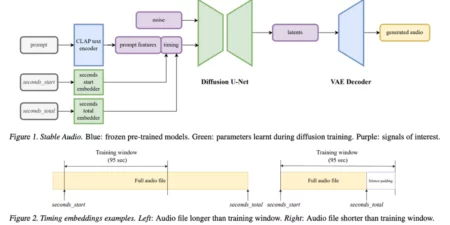Whether you are learning how to write music or getting started with understanding the songwriting structure, things are not easy at the start. You will require a song template for writing a song or learning assistance to get started.
This guide will act as a resource and helping material to let you write your first song. The process involves simple steps to make the learning easy. You can take the help of any app to write music once you understand the basics. So, without any further ado, let’s get started.
How To Write Music? (8 Steps For Beginners / Noobs)
If searching for hours about how to write a song with no experience didn’t help you, this guide guarantees you can write your music after reading it thoroughly. It includes all the basic steps you must follow to be successful and helps you how to write music lyrics without much professional assistance.

1) Choose a Genre
The first and most important aspect to consider when writing music is deciding the genre. Every genre is different and offers various features you want to incorporate into the song. For example, a country song may require using a steel guitar to use the theme of hardship and loss with the melodies it offers. Similarly, you may be required to write about the rebellion and utilize the power cords.

2) Finding the Right Rhythm
After selecting the genre, choosing the right rhythm and beat becomes essential. It should match the genre and mood as swifter rhythms and beats are paramount for disorganized songs like punk rock and techno music. Similarly, the pop and country songs with sad vibes perfectly blend with the slower beats and rhythms.
Identifying the mode and beat of the songs is necessary to fit them well with the beat. If your song seems to not fit with either of those, choose a mid-tempo approach. It will help you to fit the rhythm with classical or rock music.
You can use the online assistance to learn more about the use of rhythm and beat with a particular genre of music. For instance, a punk song has a guiding rhythm and utilizes fast music. In contrast, Reggae’s music conveys unconventional vibes using the beats played off rhythm.
3) Figure the Melody
When learning how to write a music sheet, figuring out the melody is essential. You have to find out the melody using instruments like the piano. Although you may not use these instruments in developing the song, they help to figure out the melody and help in overall development.

Using the piano is fairly simple in this regard. You can start with basic keys like A, C, D, E, F, and G. Focus on your melody idea and try to play the things according to the need and feel. It will help you develop the melody to convey the feels.
4) Write Musical Notes
If you figured out working with the melody, it is time to learn how to write music notes. You can make things easier by giving more rhythmic notes. Take the help of the more harmonic notes and utilize the thicker and fuller chords. It is better to use extra strings to get more depth to the music.

5) Define Major and Minor Scales
Once you figure out the melody, try to define it using major and minor scales. The keys have scales that define the mode and let you express it while you use them in the melodies. You can experiment with the scales and find out something that can feel right for your song.
For instance, the major keys are associated with the upbeat, happy, and energetic feel. In contrast, the minor keys do represent emotion and sadness. The major C key does represent happiness, and the D minor does sadness at extreme levels. You can alter the major and minor keys depending on how you want to convey the feeling and the song’s theme.
6) Leverage Guitar Skills
Taking guitar lessons and mastering the skill can help you write the melodies. If you search for how to write music for a song, the guitar is the first instrument that comes as a top recommendation for learning the basics. It helps create the music once you know the basics like playing chords, creating notes, and experimenting with the tunings.
You can enroll in a guitar learning course or take guidance from a local guitar teacher to learn how to play it. It will help you in writing the melodies, and you can improve your competencies. When you learn the fundamentals, testing with the melodies can help you develop the ideas.
7) Take Help from Professional
Writing music can sometimes need a co-writer in case you don’t know where to start when composing. If there are elements that do need professional assistance and you cannot handle them, taking help from a melodically gifted buddy can take you in the right direction. You can tell him your ideas about the tone, theme, and lyrics to let him finalize the music.
Getting assistance from a friend who knows music can help you translate your ideas into reality. If you don’t have any friends that can assist you in composing the music, you can take help from craigslist. Alternatively, you can hire a professional from any online platform where people sell their expertise.
8) Get Assistance from Software
You can take assistance from software to write music. It lets you overcome the inability to play the musical instrument and let you write the software. Software is available, including Ableton, which is powerful enough to create the music electronically without much knowledge of the instruments.
There are thousands of pre-recorded sounds available in the software to assist you while you compose a song. This software also perfectly works if you don’t know how to write music piano due to loads of options.
You can create bass, chords, filters, guitar effects, and many more with the help of Ableton. Combining and manipulating the presets can help you create endless opportunities to create the songs. If you don’t feel content with the available options, buying the plug-ins can help you explore more possibilities for creating music.
How To Write A Song For The First Time?
This section will explain all the possibilities on how to begin to write a song. Let’s explore the steps of creating the music and a melodious song from it.
1) Write the Catchy Title
You may think the step counter-intuitive but let me assure you that it is the best way to start with the song. Start figuring out the titles that click in your mind and look for catchy titles. You can take help from the movies, TV shows, and books to get ideas. Keep the ideas noted in your notebook, which will help you decide once you nearly finalize the title.
Let the titles come naturally to you, and don’t force the things. It will help you to make a checklist and questions according to the title. The answer to the questions comes in the lyrics when the song ends. You can pick any popular song and ponder on its lyrics. You will observe that it answers all the questions around the title.
2) Add a Hook Line
Whenever you search for how to write music sheet, there is nothing more important than using a hook for the song. A hook is usually a catchy phrase that sits in the brain at the start and is used repeatedly throughout the song.
You can start playing around with the melodies and ideas until you feel something catchy. If you have many titles, try to fit the hook to see which one feels right. You can try singing them and experimenting with the melodies to find the perfect combination.
3) Develop Chorus around the Hook
Your chorus should work as your main marketing strategy. It should entice more people to listen to the rest of your song. But that doesn’t mean you can only go with a vague approach for it.
Choruses can come in different shapes and sizes, some even as part of your verses! Whether it’s vague or detailed, your chorus should always summarize the general feel of your song, like saying, “this is how I feel about this situation – and this is what I want people to know about it.”
4) Connect the Verse with the Chorus Theme
Your hook will help introduce your idea to the listener; take your hook and develop a verse. Your verse should paint a complete picture of what you’ve already hinted at with your hook. It can be done through the use of strong imagery and specific examples.
You have to write the first verse with a specific subject adhered to it. Once you write it, write two more verses on the same pattern. Writing the second and third verses is fairly easy, and it should follow the same melody and lyrical pattern giving new information about the specifics.
5) Look for any Bridge Addition
Consider adding a bridge to your songs. A bridge is very similar to a chorus, but it’s only chanted once and describes the melodies in a different style. A good example is that you can do something like sing new lyrics or present the same words in stanzas in a different key.
Make sure the lyrics of your bridge don’t lay out specifics but instead leave room for more interpretation, a bit like that in the chorus. You could also think of applying your bridge as a prospect to showcase your instrumental skills if you intend to introduce a solo you are particularly proud of.
6) Arranging the Final Structure
Now that you’ve worked on your song’s melody and lyrics, the next step is to decide how you want to structure it – whether as Verse/ Chorus/ Verse/ Chorus/ Bridge/ Chorus or otherwise. As a general rule for pop songs, this pattern works well!
It’s time to broaden your horizons a bit! Try experimenting with different sounds and repetitions of the same elements until you develop something that works best. Each genre has its own set of song conventions.
It is often advised in EDM, for example, to start a track with an intro or build-up looping throughout the first section before finally jumping into the chorus, where things will get interesting.
7) Add more Instruments
If you’re missing something, try adding it in. After you have completed the work on the song, adding the instruments can contribute to more versatility and drive to the song. However, it is worth noting that all the instruments should follow the same criteria you have set previously.
It’s okay if you can’t perform another instrument because technology has allowed you to incorporate new instruments into your music even if you don’t know much about them. For example, recording the song’s basis on your computer and adding flair using software like Ableton or Garageband has become easier.
8) Practice the Song
Practice, practice, practice. Practice each element separately while you’re learning to ensure it is learned and generally “sounds good.” Once you’ve mastered several parts of the song, start practicing it as it requires to play out in real-time. If you notice an error or two along the way, then don’t be afraid to stop and correct these errors until they are no longer a problem!
9) Record the Song
Once you finish memorizing a song, recording it is crucial. You can use a phone, laptop, video camera, software, or voice recorder. Once the song is recorded, ensure you get a copy for yourself. That way, you won’t have any problems losing your recording or not being able to remember the tune.





